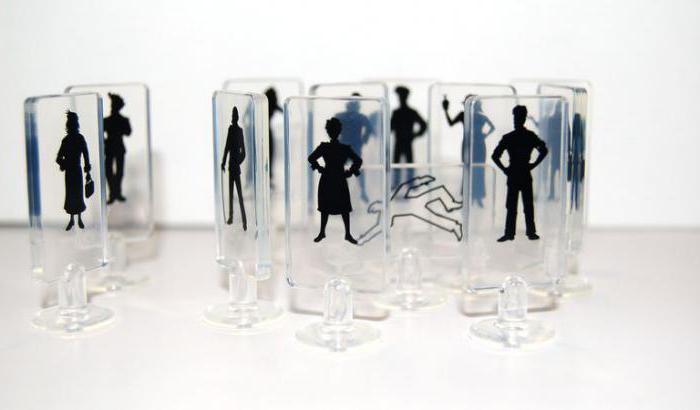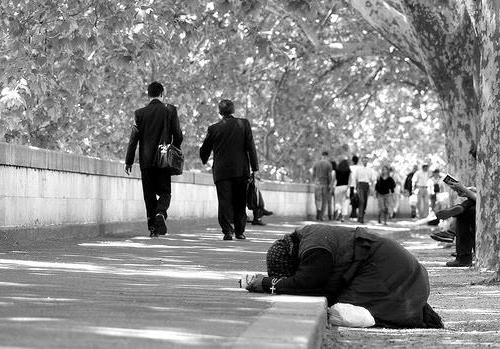What is the witness effect? Radiobiology suggests that this is the ability of affected cells to adversely affect neighboring healthy cells. But this is not about that.
Imagine: a busy street, crowded with a subway, and suddenly a complete stranger becomes ill, or a terrible accident occurs. What is the probability that you just pass by? Most will respond with confidence that they will rush to help the victim. However, psychologists say that with a large crowd of people, few people decide to be the first to come to the rescue. This is the very “witness effect”.

Description
The effect of a witness, the effect of an outsider, Genovese syndrome - all these are the names of the same social phenomenon, which consists in the fact that the more people around, the lower the likelihood that in the event of an emergency outside observers will come to the rescue.
Being in the crowd, almost everyone dares not take responsibility, thinking that someone else will definitely help the victim. In cases where there is no one around, the majority acts much more decisively, realizing that there is nowhere to come from besides them.
The Story of Kitty Genovese
It is believed that it was thanks to this incident in psychology that the concept of “witness effect” appeared.

On March 13, 1964, American Catherine Susan Genovese, better known to everyone as Kitty, was returning home from work as usual when a worker named Winston Mosley stabbed her in the back. As he later explained to the police, he simply “wanted to kill some woman.”
Genovese screamed, asking for help, but the neighbors decided that it was only the cries of a drunken girl or a banal quarrel between her lovers. But still unable to stand it, a man looked out of the window and shouted to Mosley to leave the girl alone, than, without realizing it, and frightened off the killer.
Kitty, with all her strength, was able to get home, but the door was locked from the inside, and the girl, already seriously wounded at that time, fell down without strength. And after 10 minutes Mosley returned and found her and beat her to death. Numerous stab wounds in the hands indicate that Genovese was still conscious and tried to save herself to the last. When the girl stopped showing signs of life, the killer raped her and, having stolen $ 50 from her bag, disappeared. This whole incident lasted about 30 minutes.
The next morning, newspapers were full of headlines, “Thirty-eight Witnesses to the Cruel Murder, and Not One Has Appealed to the Police.” In fact, journalists were exaggerating, according to police, only 12 neighbors were witnesses of the murder. Most of them later answered that they simply did not want to interfere. Although a short call to the police could save the girl's life, but each of the 12 eyewitnesses thought that someone else would do it.
In 1968, social psychologists John Darley and Bibb Latane, becoming interested in Kitty's story, conducted a series of experiments, thanks to which the concept of “witness effect” or “Genovese syndrome” was rooted in psychology.
Kevin Carter and a photo of a starving baby
Another vivid example of the witness effect is when in March 1993 a photojournalist took a notorious photo in Sudan, which depicts a malnourished girl and a vulture patiently awaiting her death.

According to Carter, he waited 20 minutes, hoping the vulture would spread its wings. All this time, the child whimpered and gasped. Without waiting, the photographer took the picture, as it is, drove off the vulture and left.
The public was extremely outraged.In fact, the girl’s parents only briefly absented themselves from the plane that arrived to help unload humanitarian aid, but this didn’t cease to be considered an example of glaring cruelty.
For this photo, Carter received the Pulitzer Prize, but a year later he could not stand it and committed suicide.

The reasons
As in many other cases, there are a number of factors that influence the degree of manifestation of such a social phenomenon as the witness effect. The psychology of each person is unique, each is in a different environment and is brought up according to different canons. Therefore, the reasons below cannot be taken for an axiom:
- An ambiguous situation: people around can not always understand if a person needs help. For example, neighbors can take women's screams for the entertainment of a couple in love.
- Unknown: people in an unfamiliar environment are less likely to come to the rescue of a stranger.
- Need for costs: more than half of the population will refuse to “save” the other, knowing that cash costs are possible on their part.
- Diffusion of responsibility: being in a crowd, a person, without hesitation, distributes responsibility to everyone. So he assures himself that in the event of an emergency, someone else will certainly begin to act.
- Similarity: people are more elephants to help those who are similar to them: skin color, nationality, financial situation, religion, and even the style of clothing and hair.
- Mood: emotional state also affects the desire to come to the rescue of another. If a person in his subjective opinion is full of problems, and he is upset, then having seen the one who needs help, he will most likely pass by, just as those around him pass by himself.
- Gender: studies have shown that women are more likely than men to turn their shoulders to a stranger. They also more easily accept help from people unknown to them.

Diffusion of responsibility
It is this psychological phenomenon that most often explains the effect of a witness. The more people are around, the less likely it is that a person will take any action, unconsciously distributing responsibility to all those around him.
For example, a large metropolis, a busy pedestrian street. Suddenly, a young man falls and begins to convulse. Many passersby pay attention to this, but no one takes any action. Why? Because there are a huge number of people around, no one feels pressure, no one considers himself obligated to take responsibility. Everyone thinks: “They probably already called an ambulance” or “Nobody helps this guy, so nothing bad happened.”
The study of the diffusion of responsibility
In 1968, social psychologists John Darley and Bibb Latane conducted a series of experiments to study social behavior and the effect of the witness.
The subjects were asked to fill out some questionnaires, which in fact did not really matter and were intended only to lull their vigilance. At some point, the room where they were was filled with smoke. At the same time, 3 different situations were simulated: in the first, the subject was in the room alone, in the second - together with three disinterested people from the outside, and in the third 2 dummy people joined him.
In situations where the subject was in the room alone, about 75 percent reported smoke to the experimenters. In the case when two dummies deliberately ignored the presence of a fire sign in the room, only 10 percent of the subjects said smoke.
This study was more introductory in order to understand how much a person is dependent on a responsible opinion, and whether it makes sense to further study the effect of a witness. The following experiment confirmed that Darley and Latane were not mistaken with hypotheses.

The influence of the crowd on decision making
Researchers invited subjects to represent themselves among a large number of people. And then they simulated a situation in which the subject had the opportunity to help someone. The results confirmed the hypothesis: those who represented themselves as part of the crowd were much less likely to help a stranger, compared with those subjects who thought they were alone.
It was after these experiments that the witness effect began to attract such close attention of specialists.
5 steps to help
Darley and Latane noted that having noticed something non-standard, a person needs to take five steps before helping someone:
- Detect a problem.
- Understand whether what is really happening is an emergency.
- The most important and, as studies have shown, the most complex action. A person needs to decide whether he is ready to take responsibility for his subsequent actions.
- Determine what measures should be taken in this situation.
- Help.
This whole thought process is often complicated by the fact that all decisions must be taken in an extremely limited period of time. Also often the situation can be quite dangerous, stressful and portends big risks. Add to this the fact that the situation may be initially misunderstood, and here is a person who, it would seem, is able to help, is simply inactive.

How not to fall into this trap of inaction?
Some psychologists believe that the very realization that you are in a situation that falls under the definition of “witness effect” is enough not to fall under the influence of the crowd. It is important to understand what is holding you back from acting, and to consciously take steps to overcome these obstacles. However, this does not mean that you need to act recklessly. Especially in high-risk situations.
What if you need help yourself?
How to encourage people to give you a helping hand?
The most effective way is to address your request to a specific person. Choose one person from the crowd, make eye contact with him, ask him for it. It is much more difficult for a person who is directly asking for help to pass by. All this is due to the fact that, addressing one specific person, you fully transfer all responsibility to him, and being under the gaze of the crowd, refusing someone is not so simple.
And in conclusion
The witness effect is a problem that is becoming stronger every year. A crazy rhythm of life, stresses, popularization of social networks - all this leads to the fact that we are becoming more and more self-conscious, convincing ourselves that, like in a movie, the same hero will surely appear who will save everyone, and try to run past the “uncomfortable” situation. There are many more stories when, in order to save someone, an ordinary passerby only had to make one simple call.
And in the power of each person to show a little more participation. Do not run past, hoping for a more conscious neighbor, and do not be afraid to take the initiative.